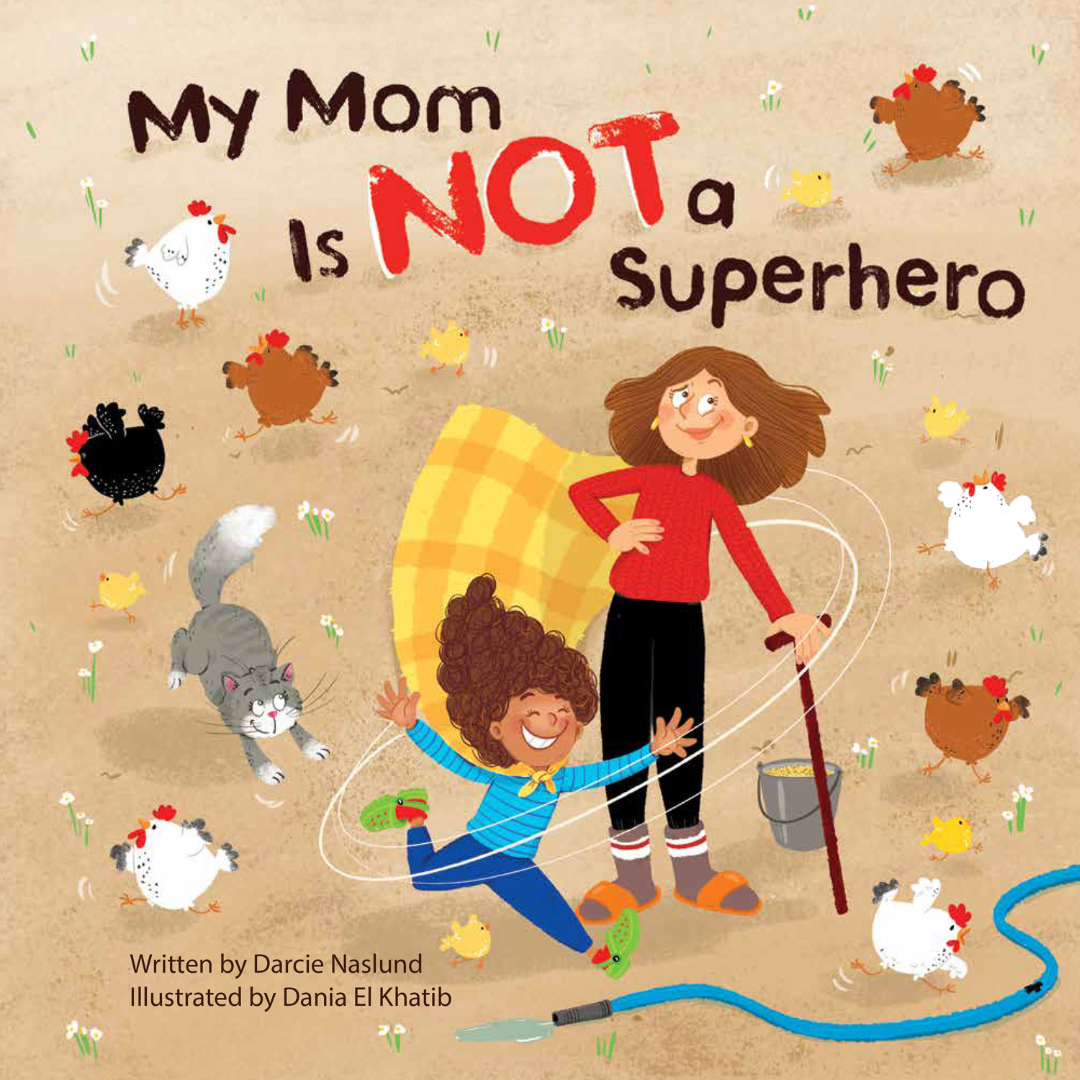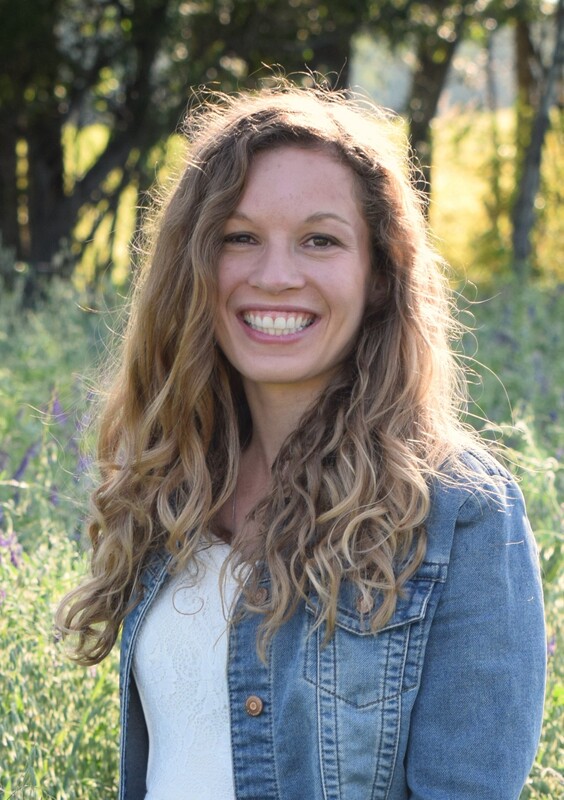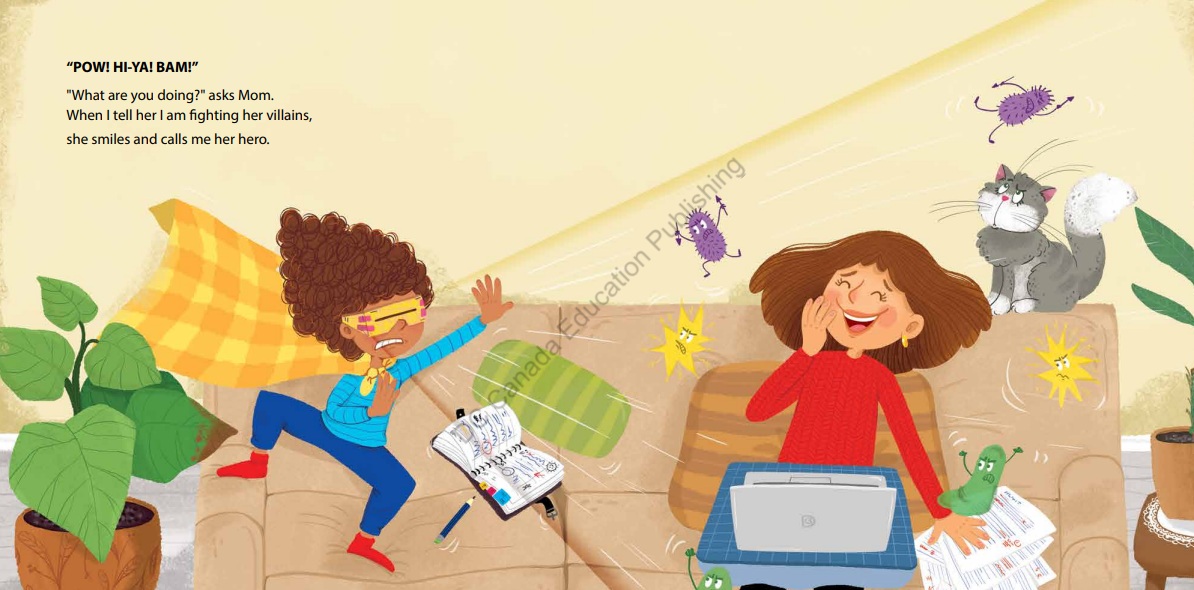
I remember the exact moment I had an epiphany and rewrote my entire manuscript. Back up a few months (okay, maybe even a year), I thought I had written the perfect picture book about
Multiple Sclerosis (MS) for my children. I explained it perfectly with lots of description, allowing the reader to visualize what it means to have MS. It seemed perfect, but the truth is I had my author blinders on.

The idea of superheroes came naturally to me. My kids love superheroes, and so do I. The challenge was finding a way to have my main character see Mom as a superhero even though she has no characteristics of a typical superhero.
It wasn’t until one of my critique partners was brutally honest (thank you) and said it sounded like a nicely written advertisement for MS that I woke up and looked at it in a new light.
After a few more critique meetings and a LOT of frustration, I put this manuscript away for a while. One day, when I was having difficulty walking, my oldest offered me her hand and asked,
“What’s wrong, Mommy? Where are your owies? Why can’t I see them?”
I suddenly realized what my story was missing. It needed something that could make the invisible visible. That’s where the X-ray glasses came in.
My critique groups have supported me through my edits, rejections, and even my great debate.
After some queries, submissions, and rejections, I was pulled in two directions. A few rejection letters mentioned that my story was too specific and may work better if it simply wrote about invisible illness and omitted the specifics. The suggestions seemed to come from a concern that the book wouldn’t have a wide enough audience.
My critique partners and I eventually agreed that even though I mention MS specifically, the story goes beyond just MS. My CPs, who have different health challenges, said that they could still relate to the story in some way even if they did not have MS. After receiving their feedback, I decided to keep the specifics of MS in the story even if it took longer to find its publisher. I also did some more research to ease my mind. This is what helped me the most:
Canada has one of the highest rates of Multiple Sclerosis in the world. Approximately 90,000 Canadians are living with MS, and about 2.8 million people worldwide, most of whom are diagnosed between the ages of 20 and 49, the same age as many parents across the world. Statistics like these gave me the confidence that my readers are out there and that my book is needed.
Long story short, critique groups are important.
A critique group provides editorial support, emotional support, and the motivation to never give up. If I had not found my critique groups, I wouldn’t be where I am today. If you are a writer, my advice is to find your critique group. On this incredible, overwhelming, sometimes frustrating writing journey, they will be your people.
Darcie Naslund was born and raised on a small farm in central Alberta. Passionate about working with children and children’s literature, she chose to become a teacher. Soon after, she started her family and farm. Darcie was diagnosed with Multiple Sclerosis 11 years ago and continues to fight and spread awareness.
Learn more at www.darcienaslund.com
Or follow her on social media https://linktr.ee/darcienaslund




